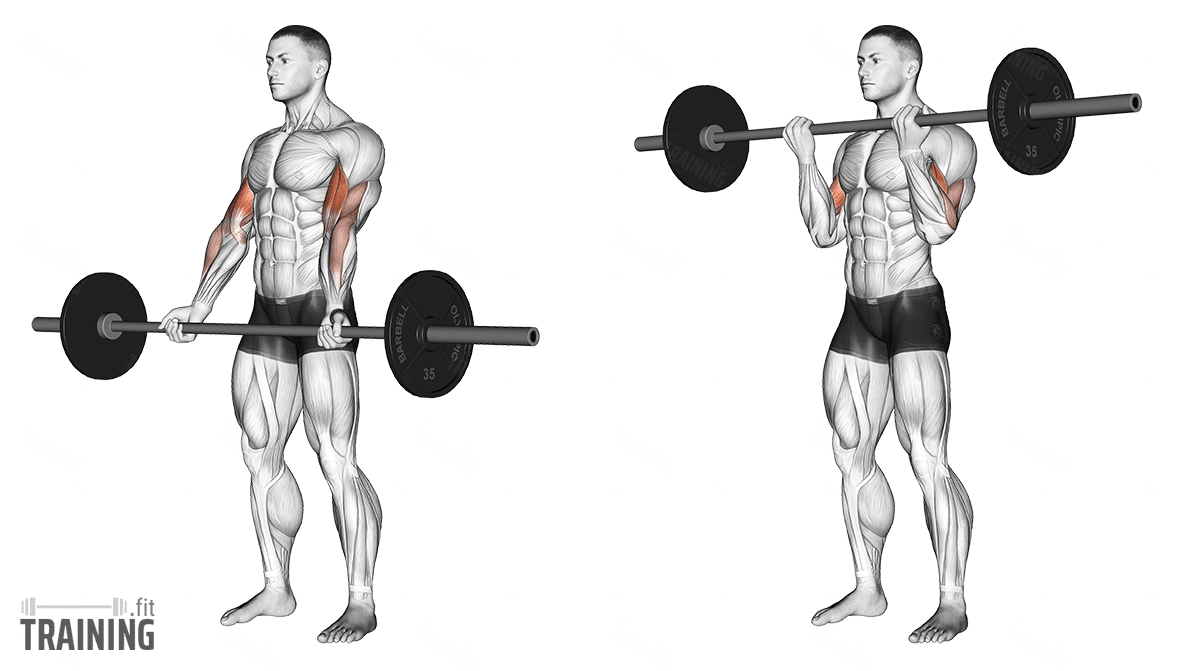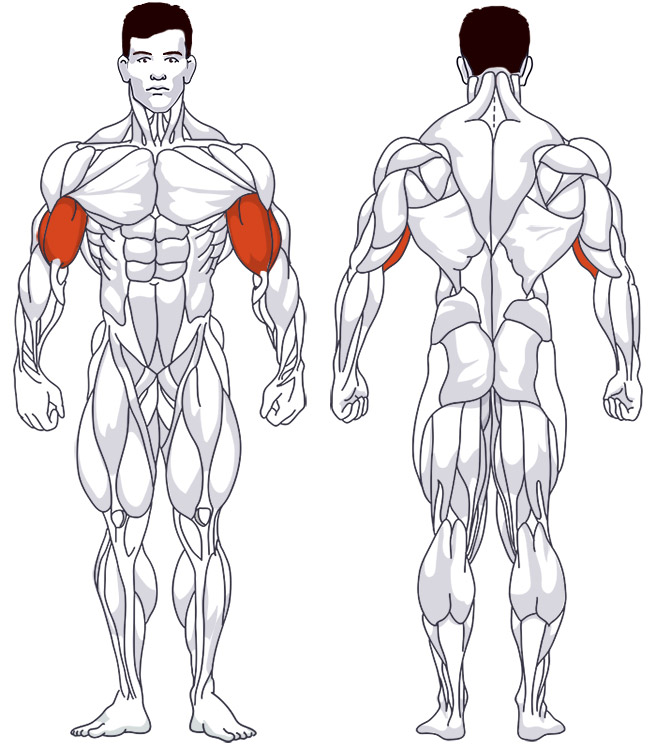Barbell Curls
Isolation exercise, Free weightsThis article is verified by 1 study/publication.
Overview

Main muscles
- Biceps: Arm flexor
(Musculus biceps brachii) - Upper arm: Coracobrachialis muscle
(Musculus coracobrachialis)
Training plans
Here you can find example plans for barbell curls training:
Barbell Curls: Basics and alternatives

Involved main muscle groups:
Barbell Curls
Barbell curls are a great alternative to the popular dumbbell biceps curls because they help you maintain good symmetry in your movements. Since both hands are on the barbell, you naturally compensate for your weaker arm without sacrificing form. The movement stays basically the same: hold the barbell in your hands and bend and extend your arms, activating your biceps. Barbell curls are also an isolation exercise for your biceps muscles.
Another variation to standing barbell curls is the reversed incline bench barbell curls.
In most cases, not only is one arm weaker than the other, but the associated shoulder is weaker too. With dumbbell biceps curls, this can sometimes cause sloppy movements when you struggle to lift the dumbbell on your weaker side. You automatically avoid this problem with barbell curls because both arms help move the weight equally. When one arm weakens, the other compensates to some extent. However, finish the set before one arm weakens too much.
Correct Execution
You can perform barbell curls with a straight bar or an EZ bar. The EZ bar has a small advantage because it activates the biceps more than a straight bar.[1].
The EZ bar also benefits from a more natural hand position, which puts less stress on your wrists and elbows. The tilted hand position allows for a stronger grip. So if you have joint problems or notice too much tension when using the straight bar, consider switching to the EZ bar.
Video Tutorial
Step-by-Step Instructions
Load the weight plates onto the barbell and lift it from the rack using an underhand grip (palms facing up). Your grip width should be slightly wider than shoulder width to evenly activate the biceps muscles.
Move to a clear area and stand hip-width apart. Hold the barbell firmly in an underhand grip in front of your body with your arms extended and your triceps slightly contracted.
Tighten your abdominal muscles along with your entire core to maintain an upright stance.
Now bend your arms at the elbows, bringing your forearms upwards. The bar moves towards your face. Perform the movement until your elbows reach their maximum bend.
Lower the weight in a controlled manner, using only your elbows for the movement. Keep your elbows, shoulders, and torso in place throughout the flexing and extending motion. Avoid swinging your torso back and forth, and make sure the movement is only done by activating the biceps.
Common Mistakes
A classic mistake, although less common with barbells, is the swinging motion. Even though swinging allows you to move more weight, it doesn’t increase the training stimulus. So, avoid using excessive weight, even if the barbell or EZ bar’s two-handed grip tempts you to do so. Focus on controlled movement throughout the entire range of motion, both up and down.
Swinging often goes hand in hand with a pronounced leaning back of the upper body. You should avoid that as well. Keep your back straight and your core tense throughout the exercise.